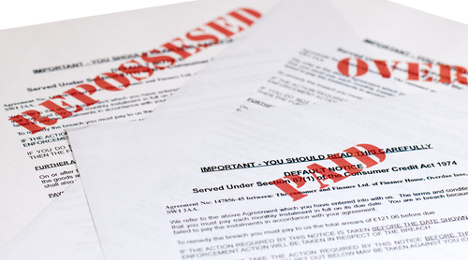S&P/Experian: November Auto Defaults Stay Flat

Auto loans defaults stayed the same level on a sequential basis in November, according to the S&P/Experian Consumer Credit Default Indices released this week.
S&P Dow Jones Indices and Experian determined the auto default reading came in at 1.05 percent last month, the same level as October. A year earlier, the reading stood 10 basis points higher at 1.15 percent.
The national composite rate — a comprehensive measure of changes in consumer credit defaults — continued to show an increase in default rates in November, as it ticked up 1 basis point from October to 1.07 percent.
For the fourth consecutive month, the first mortgage default rate rose 1 basis point to 0.97 percent in November.
The second mortgage default also increased 1 basis point from its historical low in October to 0.48 percent.
Analysts highlighted that the bank card rate set a new historical low again in November with a reported rate of 2.59 percent, down 1 basis point from the previous month.
“The composite default rate continues to show very little movement, remaining close to one percent. The default rate on autos is up slightly from last summer's low but below levels of a year earlier,” said David Blitzer, managing director and chairman of the index committee for S&P Dow Jones Indices.
“Default rates for bank credit cards are at their lowest levels since the series began in 2004 while first mortgage defaults are up very slightly from summer lows,” Blitzer continued.
“Key economic factors favor the consumer: oil and gasoline prices are down, debt services ratios — the proportion of income the average house uses to cover debt payments — are close to record lows, inflation is low and the economy is finally seeing hints of wage growth,” he went on to say.
Looking at the five largest U.S. cities analysts track for this monthly report, Chicago, Los Angeles and New York all posted default rate decreases in November.
In fact, the Windy City generated a default rate of 1.11 percent — a new historical low — while Los Angeles decreased 1 basis points to 0.80 percent.
In the Big Apple, the rate ticked lower for the fourth month in a row, leaving New York rate for November at 0.98 percent.
Conversely, Dallas and Miami both endured default rates increase in November. Dallas came in at 1.03 percent while Miami’s rate spiked 20 basis points higher from October’s reading to land at 1.46 percent.
“Despite the recent trend, all five cities — Chicago, Dallas, Los Angeles, Miami and New York — still remain below rates seen a year ago,” Blitzer said.
Jointly developed by S&P Indices and Experian, Blitzer reiterated the S&P/Experian Consumer Credit Default Indices are published monthly with the intent to accurately track the default experience of consumer balances in four key loan categories: auto, bankcard, first mortgage lien and second mortgage lien.
The indices are calculated based on data extracted from Experian’s consumer credit database. This database is populated with individual consumer loan and payment data submitted by lenders to Experian every month.
Experian’s base of data contributors includes leading banks and mortgage companies and covers approximately $11 trillion in outstanding loans sourced from 11,500 lenders.

 View The Latest Edition
View The Latest Edition

